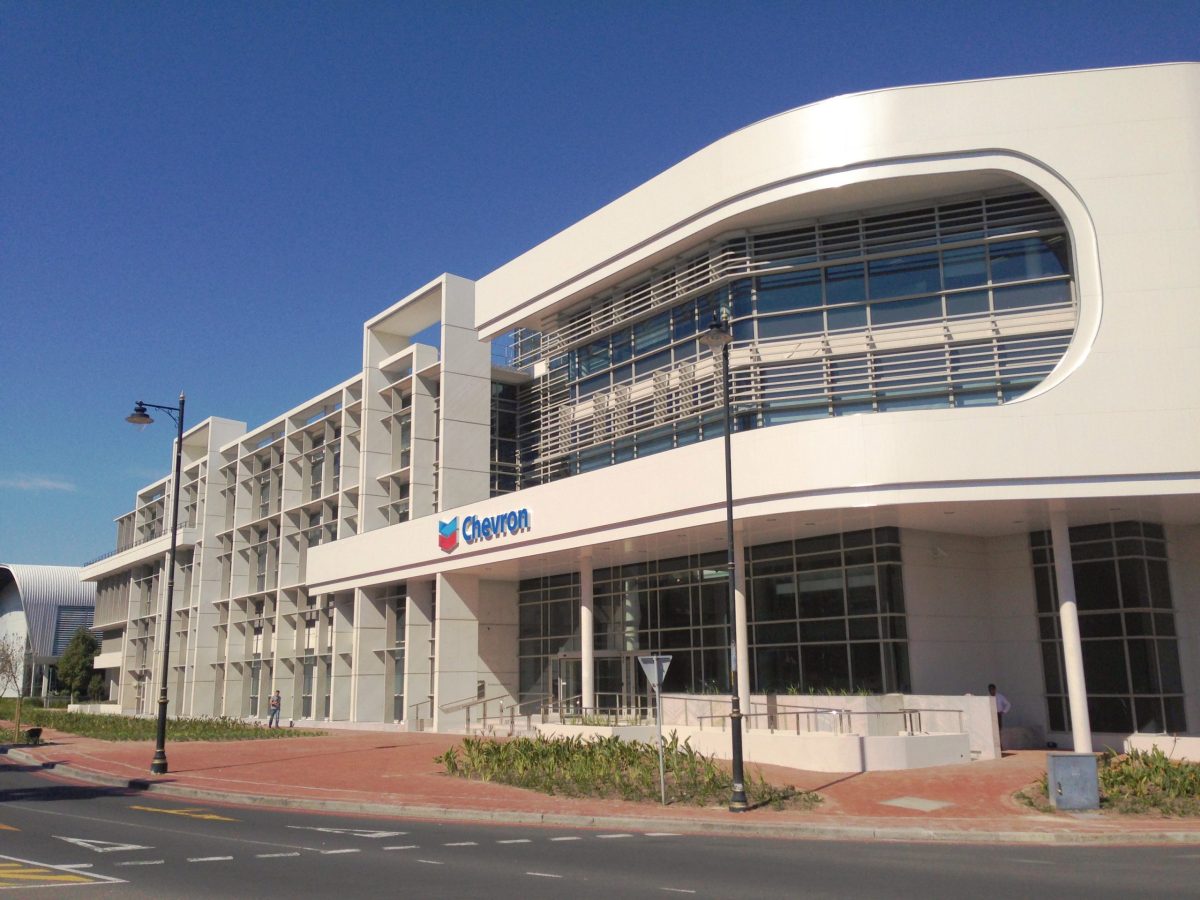
Chevron South Africa
wanted a landmark sustainable design for its new 9,500-m² headquarters in
Century City, Cape Town. The winning architectural design proposed a white
concrete building, but Chevron was initially sceptical that the local
construction industry could successfully build a major structure in white
concrete that would meet its rigorous quality requirements.
Lafarge South Africa’s
Readymix Cape Town team convinced them that its innovative ArteviaTM
decorative concrete was the solution for achieving a beautiful, durable
concrete finish. Completed in 2014 at a cost of over R200 million, today
the superb landmark building is a testament to the team’s confidence.
Lafarge South Africa is the local
presence of the international LafargeHolcim Group, a world leader in building
materials. The Group is committed to creating innovative materials and building
solutions that contribute to more durable, sustainable and beautiful
environments for all. To meet the challenges
of the fast-moving construction industry and serve architectural creativity,
innovation is a focus of the Group’s investment in research and development.
Lafarge ArteviaTM
is one of a range of decorative concretes available in an extensive choice of
colours and textures, providing almost unlimited scope for architectural
expression. It is a high-quality structural concrete combining durability and
low maintenance with a high standard of aesthetic finish. The product has an
integral UV-stable colour pigment, minimising the effect on appearance if the
concrete surface is chipped or damaged.
The project involved what
was believed to be the largest volume of white concrete ever used in the
Western Cape. For the Readymix team, the challenge was to produce a consistent
mix with raw materials – white cement and white pigment – that they hadn’t used
routinely before. Basing the mix on white cement demanded absolute cleanliness
throughout the production, delivery and placement process, in close
collaboration with the main contractor to enable them to achieve a high-class
consistent finish.
“As most of the
concrete was placed by crane, maintaining concrete workability for the
contractor tested our technical skills at the start of the project. This was
resolved by our technical team and the admixture supplier,” says Lafarge South
Africa’s regional technical manager, Craig Mills. “We were fortunate in having
backup from a team of concrete experts based at the Lafarge Centre of Research
in France.”
The unique high-class
white concrete project had to be carefully planned and meticulously controlled.
At the Lafarge batch plant, special white cement was used and the white colour
of the mix enhanced further with white pigments. The plant team had to use a
dedicated truck loading hopper for the white ArteviaTM mix and
carefully wash all conveyor belts before loading the Lafarge truck mixers,
which had been thoroughly washed and inspected. Sand colour variation was a
continual concern and this, combined with the reactivity of the white cement,
required a Lafarge technical representative to monitor the concrete for all the
pours.
As there could be no
risk of contamination, the extent of the challenges that had to be addressed had
been hard to envisage: it involved the contractor purchasing new equipment
purely for white concrete use; the contractor’s trucks could not have been used
previously for standard grey concrete. All placing equipment had to be set
aside for only white concrete use, including two banana buckets and even
compacting vibrators.
Extreme cleanliness up
to concrete placement wasn’t the only factor in ensuring the white finish was
of the required high standard; shutter release oil was a critical area to avoid
staining and, after extensive trials, a water-based product was selected. Rusting
of the rebars was a concern and a sealant was used to close plastic shrinkage
cracks to minimise the risk of rusting. To minimise cracking, the tops of the
columns were covered with wet hessian immediately after casting and, as soon as
the formwork was stripped, the columns were wrapped in plastic wrap and then Perspex.
The Perspex worked well to prevent damage that would not have been possible to
repair.
“This project was a good
example of how it is possible for various stakeholders to work closely together
to achieve an exceptional result,” comments Pieter de Bod, Lafarge’s key
account manager for Cape Town. “We were fortunate to have Chevron as an owner/client,
who insisted on a high-quality, sustainable building as their overriding priority.”
With the strong support
from Lafarge South Africa’s product and technical solutions, the contractor
tackled all the challenges and delivered the best white concrete off-shutter
result that exceeded the client’s expectations.
“This outstanding
building stands as a testament that in partnership with LafargeHolcim’s technical
resources, the local building industry has the skills to create a world-class
result,” concludes Mills.
More information from Natalie Johnson,
Tel: +27(0)11 657 2320 / email: [email protected] / www.lafarge.co.za / www.lafargeholcim.com

